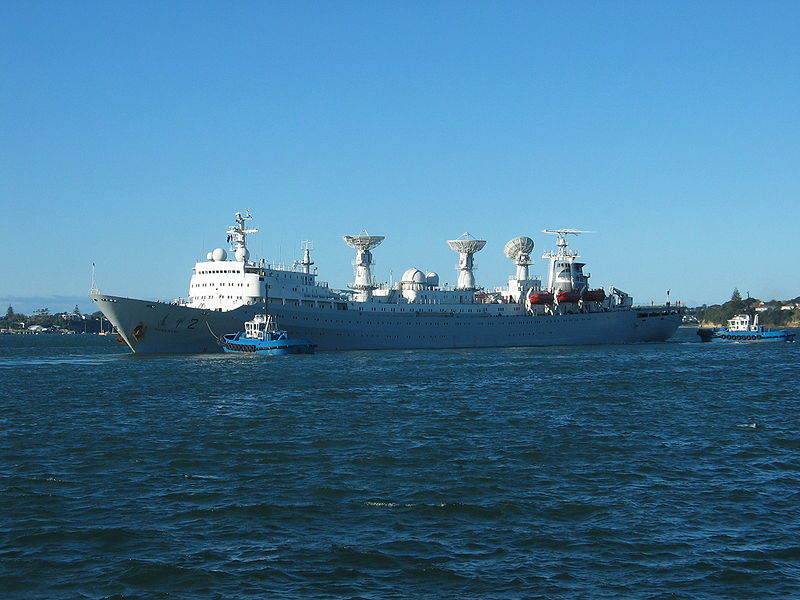A Balancing Act
 After centuries of humiliation, domination, and colonization by the West, nearly three billion residents in the Pacific region are rising to claim what is rightfully theirs: economic prosperity, diplomatic influence, and national pride. Yet this newfound power breeds new challenges for the United States policy in Asia. The greatest headaches for US policymakers arise, of course, from the People’s Republic of China’ new aim to radically alter the US-enforced status quo in the region.
No country has benefited from post-1945 American policy in Asia more than China. After normalizing relations with the United States in the 1970s, the Chinese took full advantage of open and free access to the seas. Since Deng Xiaoping implemented his epochal “Open Up and Reform” policy, China has enjoyed breakneck economic and social development. Yet, the vast strengthening of the People’s Liberation Army has also accompanied the growth of Beijing’s and Shanghai’s glittering skylines.
After centuries of humiliation, domination, and colonization by the West, nearly three billion residents in the Pacific region are rising to claim what is rightfully theirs: economic prosperity, diplomatic influence, and national pride. Yet this newfound power breeds new challenges for the United States policy in Asia. The greatest headaches for US policymakers arise, of course, from the People’s Republic of China’ new aim to radically alter the US-enforced status quo in the region.
No country has benefited from post-1945 American policy in Asia more than China. After normalizing relations with the United States in the 1970s, the Chinese took full advantage of open and free access to the seas. Since Deng Xiaoping implemented his epochal “Open Up and Reform” policy, China has enjoyed breakneck economic and social development. Yet, the vast strengthening of the People’s Liberation Army has also accompanied the growth of Beijing’s and Shanghai’s glittering skylines.
The motive: China’s claims over Taiwan and the vast majority of the South China Sea rely on arbitrary lines from Nationalist World War II era maps. Mouthpieces of the party such as the Global Times have stated that these territorial claims are China’s “bottom line” and that any means necessary will be taken to “defend” them.
The nerve: With views that the United States is rapidly declining and debt-ridden, the Chinese believe that the United States will retreat from Chinese advances with its tail between its legs.
China’s increasing bellicosity in the face of overlapping territorial claims in the South China Sea with the Philippines, Taiwan, Vietnam, Brunei, and Malaysia has launched a wave of nervous hand-wringing in both Chinese and international media. Vietnam and the Philippines, among others including Japan, India, and most ASEAN countries, have made it very clear that they have no intention of allowing the Chinese complete hegemony over a sea through which a third of global trade passes and in which plentiful reserves of natural gas are thought to exist.
The United States, whose powerful position in Asia remains unquestionable, has thrown its lot in with the smaller nations of the ASEAN. Decades after opening trade to an impoverished China, Washington must try to calm a monster of its own making. In spite of a budget crunch at the Pentagon, Secretary of State Hillary Clinton has outlined the commitment of the United States to protect the right of all nations to access the South China Sea. At this point, only the military and diplomatic weight of the United States seems enough to balance against increasingly daring Chinese operations, but this may soon change.
The best policy that the United States can employ to ensure stability in Asia is to draw upon regional powers to balance against China’s increasing might. The US military is already conducting joint-military training with Australia and Singapore, and counts New Zealand, the Philippines, and Thailand among its key non-NATO allies in the Asia-Pacific region. Although not yet strategic military partners, Vietnam, Indonesia, and particularly India have also presented themselves as potential allies for Washington in its effort to keep China from doing anything rash.
The risks: Such an approach might heighten China’s perception that it is being boxed in by hostile countries aligned with the neo-colonialist Americans. This, however, cannot be helped. If the Chinese continue to push for control over disputed international waters, the only appropriate response is to show that the international community will not stand for such behavior.
It’s not a new Cold War. While the Soviet Union was neither a major economic partner nor an economic competitor, the United States must find a way to balance potential Chinese aggression while still cooperating with the rising giant on trade and climate change. India’s, Indonesia’s, and Vietnam’s rapid development alongside China makes the situation all the more difficult for Washington to predict or control. Make no mistake – a shift in the status quo is unfolding across Asia and the Pacific. As we stand back, it is clear that the United States’ ability to tip the scales will define what may be the world’s most critical region in the 21st century.

